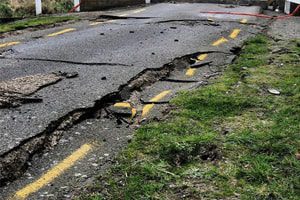
Hydraulic fracturing—fracking—has been tied in recent research to a significant association with increased seismic activity in Ohio. Records going as far back as 1776 indicate that Youngstown, Ohio has never experienced an earthquake; however, since January 2011, 109 tremors were recorded, according to The Institute of Engineering and Technology’s E&T Magazine. Emerging research from Geophysical […]
 Hydraulic fracturing—fracking—has been tied in recent research to a significant association with increased seismic activity in Ohio.
Hydraulic fracturing—fracking—has been tied in recent research to a significant association with increased seismic activity in Ohio.
Records going as far back as 1776 indicate that Youngstown, Ohio has never experienced an earthquake; however, since January 2011, 109 tremors were recorded, according to The Institute of Engineering and Technology’s E&T Magazine. Emerging research from Geophysical Research-Solid Earth indicates that the increased seismic activity is probably due to area fracking facility activity.
The Northstar 1 well, which pumps fracking wastewater in nearby Pennsylvania, went online December 2010. Over the next year, E&T Magazine followed the seismometers located in and around Youngstown, which recorded 109 earthquakes. The strongest of these was a magnitude 3.9 earthquake that occurred on December 31, 2011.
“In recent years, waste fluid generated during the shale gas production—hydraulic fracturing, had been increasing steadily in US. Earthquakes were triggered by these waste fluid injection at a deep well in Youngstown, Ohio during January 2011 to February 2012. We found that the onset of earthquakes and cessation were tied to the activity at the Northstar 1 deep injection well,” said Dr. Won-Young Kim.
The study authors also discovered that activity onset, cessation, and temporary dips with Youngstown earthquakes were associated with Northstar 1 well activity, with the first earthquake recorded 13 days after pumping began, according to E&T Magazine. The tremors stopped just after the Ohio Department of Natural Resources shut the well down in December 2011. Seismic activity dips were related to a number of occasions and periods—Memorial Day, the Fourth of July, Labor Day, and Thanksgiving, for example—when injection activities at the well were temporarily ceased, noted E&T Magazine.
“The earthquakes were centered in subsurface faults near the injection well. These shocks were likely due to the increase in pressure from the deep waste water injection which caused the existing fault to slip,” said Kim. “Throughout 2011, the earthquakes migrated from east to west down the length of the fault away from the well; indicative of the earthquakes being caused by expanding pressure front,” he added, according to E&T Magazine.
We previously wrote that other researchers found that the disposing of fracking wastewater might be associated with an increase in earthquakes.
Fracking drilling for natural gas involves horizontally injecting tons of silica sand, a massive mix of more than 600 chemicals, and water at least one mile underground via a drill into a concrete well that extends to a bed of shale rock deep beneath the earth’s surface. When this combination reaches the rock, it is blasted apart and natural gas is released and supposed to be returned to the surface and captured; most of the water remains underground. Industry has injected more than 30 trillion gallons of toxic fracking wastewater deep into the earth.
Researchers from Columbia University and the University of Oklahoma found what they described as a “profound” increase in the number of earthquakes at three different sites in which fracking wastewater was injected into the ground, said the study’s lead author, Nicholas van der Elst, a scientist at Columbia’s Lamont-Doherty Earth Observatory in Palisades, New York, according to a prior Bloomberg News report. van der Elst’s article on the research appeared in Science.
The researchers found that fracking wastewater disposal might impact fault zones, making them more prone to earthquakes. As subsurface rocks become saturated with fracking fluids, area fault lines, in turn, may become less stable, van der Elst said, according to Bloomberg News. “This study helps show the link between the pumping and the earthquakes,” van der Elst said in an interview.
In fact, the report indicated that “significant seismic activity” taking place in other locations on earth—even as far away as on other continents—might “induce” an earthquake in a fracking injection zone days, even hours, following injection. “Seismic waves from the distant earthquake can squeeze the rock like a sponge,” van der Elst told Bloomberg News.


